




e park has been closed for nearly a year and will o er a new spot for neighborhood kids to play
By JESSICA MORDACQ Staff ReporterThe Park District of Forest Park opened the renovated Reiger Park May 17 after a multi-year effort to solidify its permitting and construction.
Reiger Park now boasts a water feature, gaga ball pit, sand area, a shelter with restrooms and tables with checkerboards. A small soccer field sits at the park’s south end, against 16th Street, and the playground has all new equipment, catered to those with physical and mental disabilities.
“One of the biggest things when you go into building parks are: What are the physical disabilities that people may have?” said Jackie Iovinelli, the park district’s executive director. “But we forget about the mental disabilities that you don’t see.”
Synthetic turf re placed the playground’s mulch to create more of a sensory experience. At the north end
See REIGER PARK on pa ge 6





When local residents heard that a 120foot LED billboard was proposed for the southeast corner of the CTA Blue Line station, they quickly organized and pushed back at a planning and zoning commission meeting April 15, which continued during a meeting May 20.
The meetings were held to decide whether the planning and zoning commission should recommend to the village council to approve a conditional use pe rmit for the billboard, since 711 Des Plaines Ave. is in an industrial district and a special permit is required to install a billboard there.
On May 20, the commission voted against recommending that the council approve the billboard’s conditional use permit. Of the seven-member board, only Ryan Russ and Chairperson Marsha East voted to recommend the permit.
“This is a review committee. This is about due process. Whether I like something or not, I have to give it a voice to be heard,” East said. “If it meets the conditional use permit, if we deny it, we open ourselves up to litig ation.”
“Approval can also lead to litigation,” said Gene Armstrong, who lives in the Residences at the Grove, 7757 Van Buren St. T he c riteria for a c onditional use pe rmit include:
1. That the establishment, maintenance, or operation of the conditional use will not be detrimental to, or endanger the public health, safety, morals, comfort, or general welfare;
2. That the conditional use will not be injurious to the use and enjoyment of other property in the immediate vicinity for the purposes already permitted, nor substantially diminish and impair property values within the neighborhood;
3. That the establishment of the conditional use will not impede the normal and orderly development and improvement of the surround-

ing property for uses permitted in the district;
4. Those adequate utilities, access roads, drainage and/or necessary facilities have been or are being provided;
5. That adequate measures have been or will be taken to provide ingress and egress so designed as to minimize traffic congestion in the public streets;
6. That the proposed conditional use is not contrary to the objectives of the current comprehensive plan for the village of Forest Park; and
7. That the conditional use shall, in all other respects, conform to the applicable re gulations of the district in which it is located, except as such re gulations may, in each instance, be modified pursuant to the recommendations of the board.
Board members who voted to not recommend the permit said it would violate points two and five.
“I don’t see anything that shows me that it will not impair values and reduce the enjoyment of other property nearby,” said commission member Kerri McBride. “So,
reduced the proposed height of the billboard from 120 feet to 75 feet and, because of resident pushback, changed it from a two-sided LED screen to a singular side, said Nicholas Ftikas of the Law Offices of Sam Banks, working with the CTA and Outfront Media.
“Why we landed on that 75-foot height is because it’s at a point where, from the residential district, from the street, you can’t see the structure,” Ftikas said. He added that, May 13 a bucket truck parked at the billboard’s proposed site was raised to 75 feet and wasn’t visible from the street on Lathrop Ave.
And the billboard’s design was amended to face just southwest, toward I-290, to reduce the effect a screen on the other side would have on surrounding properties.
“There is absolutely zero light going toward the nearest residential district to the East,” Ftikas said.
Residents who spoke at public comment during the PZC meeting May 20, disagreed.
I am a no.”
“We are witnessing the injury and lack of enjoyment right here, with all these people speaking their concerns,” said commission member Scott Whitebone.
Locals’ c omplaints at the April 15 PZC meeting, p lus during public c omment at the Vi llage C ouncil meeting April 22 and at the May 20 meeting, included that the billboard would be too tall, too bright and, because it ’s on CTA property, that Fo rest Pa rk would n’ t g et any money from i ts adve rt i ser s.
After the first meeting April 15, the commission decided it needed more infor mation before they decided whether or not to recommend the conditional use pe rmit.
At the second meeting May 20, the CTA

“Although they’ve made concessions and lowered the sign, all of the facts they presented tonight are extremely biased,” said Gerry Santora, who lives on the 600 block of Lathrop Ave. The top of the bucket truck, he said, might be 10-by-5 feet, compared to the billboard’s proposed 60-by-20 feet. And he added that it doesn’t mean much that the truck couldn’t be seen from his street in May, where trees are covered in leaves.
“In summer, trees will allow about 10-to30% light transmission or visual transmission. But in the fall and winter, you have 70-to-90% visual transmission,” said Santora, who works in development. “You’ve also completely not considered the fact that almost every house on that block, and the blocks on the south side of the Eisenhower, have two stories.”
“I f this request is approved, I and all the other c ondo owners with eastern exp osures will be exposed to a giant flashing video b oard all day and all night, ” Armstrong said. “This is a gross disruption to our right to the quiet enjoyment of our proper ty.”
Forest Park geared up for an explosion of color and creativity as Brushes on the Bridge returned to the Circle Avenue bridge on Saturday.
This collaborative art initiative aims to unite residents and local groups in crafting more than 100 miniature murals along the sidewalks of the Circle Avenue bridge that stretches over the Eisenhower Expressway.
The initiative, organized by the Arts Alliance Forest Park in collaboration with the Village of Forest Park, promised to be a celebration of community engagement



and artistic expression.
Inspired by a desire to beautify the bridge and foster community cohesion, Brushes on the Bridge first debuted seven years ago.
Since then, it has become a beloved tradition, with organizers adopting a five-year timetable to refresh the mural and maintain its vibrancy.
Forest Park resident Jana Schroeder and her daughter Tara participated in the first Brushes on the Bridge in 2017 and noted ho w it is a good bonding activity to participate in
“We are painting bees. I decided it was going to be my summer of bees. Although on this painting I will be adding some flowers and adding a few cicadas since this is the year

More than 300 people are expected to help beautif y the bridge with handpainted murals.



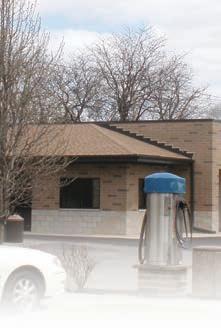





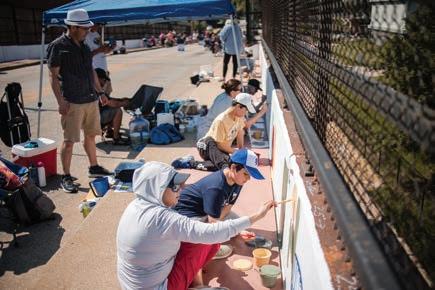
the cicadas will emerge,” Schroeder said.
Other community members are doing this to help promote their business. Chicago resident Milton Coronado is an artist and was asked by his friend who owns Pet Emporium in Forest Park to create a painting.
When asked about his process on creating the painting, Coronado said that since it is his friend’s business, he had to go to her and ask what her ideas were

Art Alliance, spearheads the project.
“My friend’s idea was to make it artistic and focus more on the art and less on the words and adding a cat and dog and I went with that idea by creating cartoon dogs and cats,” Coronado said.
For others, it is about preserving history. Bob Cox is a resident of Forest Park and dedicated his painting to his house.
“I am painting the front doors of my home My house is more than 150 years old, and it used to be the original farmhouse with 40 acres situated on Madison Street,” Cox said.
Karen Rozmus, President of Forest Park’s
“This time is going to be just as amazing as when we first did it when we did it seven years ago. It was to beautify the bridge which was in terrible shape. Over the years the murals have rusted,” Rozmus said.
Rozmus noted that this is a six-month project and there are a lot of threads to hold together and how the community comes together.
“We have artists, sponsors, community organizations, historical societies, garden clubs, the Animal Care League of Oak Park, and schools participating. The library is also involved; it’s a wonderful community event,” Rozmus said.























Thursday, May 23, 6:30-8 p.m., Forest Park Public Library
Join us in celebrating two decades of authentic homemade Mexican cuisine and heartfelt hospitality in the heart of the Berwyn community! From our humble beginnings as a small, four-table establishment, La Lupita has grown into a beloved local icon, renowned for our dedication to delicious, authentic dishes. Lupita and her three kids are immensely proud of this incredible journey and grateful to all our patrons
who have supported us through the years. Through recessions, pandemics, inflation, and more, your support has given us the strength to continue providing the exceptional food and service you deserve. We invite you to stop by and experience our newly renovated space, enjoy our beautiful patio, and look forward to our upcoming rooftop addition.

7555 Jackson Blvd., Forest Park e or q circle l ev 7555 Jk
Beginning or experienced knitters, crochet enthusiasts, macramé and embroidery makers, or quilters: come join us in this sociable creative circle led by Karen Wiebe. Tea will be ser ved. Register for this event at https://tinyurl.com/5dpbsud4.

Thank You for 20 Amazing Years! Come celebrate
Saturday, May 25, All Day, Forest Park Public Library
Fly your Pride with our kite kits. Decorate your kite to your own speci cations, and we’ll display it for all to enjoy. Return your kite by June 17 to display it in the library and enter a drawing for a gift card to Escape Factor. The winner will be drawn on July 5. Please include your name somewhere on your kite. Only 40 seats are remaining, so register at https://tinyurl. com/ycx9pzrp . 7555 Jackson Blvd., Forest Park
Tuesday, May 28, 7 p.m., Rober t’s Westside
Rober t’s Westside presents: EUCHRE NIGHT, a fundraiser for Rescueber, a local non-pro t transporting rescue animals and mutual aid goods. Doors open at 6 p.m., with Euchre star ting at 7 p.m.. This event will be held in Bobby’s, the bar located on the east side of Rober t’s Westside. 7321 Madison St., Forest Park
Friday, May 24, 6:30 p.m., Rober t’s Westside
Luke Winslow-King is a full band concert. General admission advance tickets are $15, $18 at the door, and reserved seating is $20. Limited general admission seating is available, so consider purchasing reserved seating. Doors open at 6:30 p.m., with music star ting at 8:00 p.m. This event is for ages 21+, under 21 allowed with a parent/guardian. Purchase tickets for this event at https://tinyurl.com/25hd6s9a. 7321
Madison St., Forest Park
Wednesday, May 29, 11 a.m. – 1 p.m., Forest Park Public Library – Austin Room
Step into your happy place at the library. Every week, those 55+ are invited to join our vibrant community. Engage in lively conversations, explore shared interests, and stay active, engaged, and well-informed. Today, dive into Chair Yoga with DuShaun B. 7555 Jackson Blvd., Forest Park

The Forest Park Review is looking to invigorate its coverage of arts, food and enter tainment. We want to hear from you! Please take this short sur vey to help us learn what you want when you’re looking for things to do. Please submit your answers by May 26. https://forms.gle/yss7eCACoXW49jqNA






from page 1
of the playground, there’s a row of hollowed-out circles.
“Kids with autism appreciate them because, when you get into them, they hold you and they rock you,” Iovinelli said.
Elgin-based Clauss Brothers constructed Reiger Park, and Naperville-based Hitchcock Design Group designed it with input from the community. In 2021, Hitchcock pitched concepts to locals, who gave their feedback to help create the newly opened park.
ment of Natural Resources. But the park district’s plan shifted gears when it took over a year for the understaffed IDNR to award Reiger Park with the OSLAD grant, according to Iovinelli.
The park district wanted to renovate Reiger Park first because it is the largest of the pocket parks. Because of delays, the organization first renovated Popelka Park, which opened last summer and was funded by the park district’s capital budget.
After the park district received the OSLAD grant for Reiger Park in the fall of 2022, construction was slated to begin in June 2023.
But there was a wait for a permit from the Metropolitan Water Reclamation District of Greater Chi-
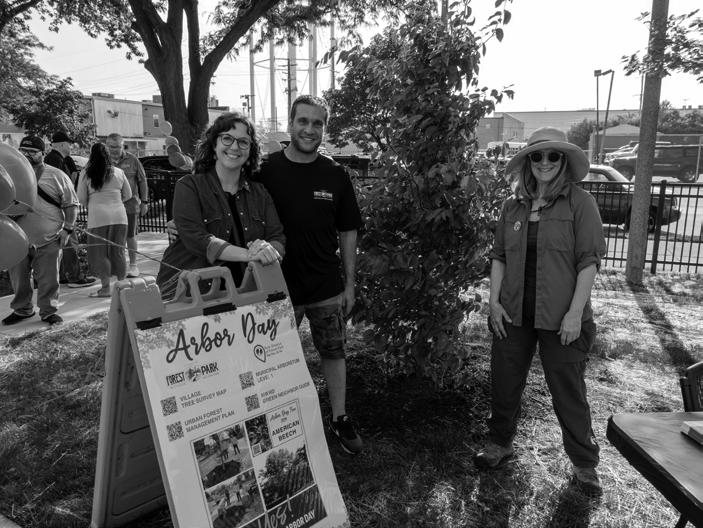
In 2020, the Village of Forest Park transferred its four pocket parks to the Park District of Forest Park through a 99-year lease at $1 per year. The process to redo Reiger Park started in the summer of that year
“I’m driving around town thinking, ‘Why do these parks look like this?’” Iovinelli said. She added that the pocket parks had outdated equipment and mulch overgrown with weeds.
Though the park district originally hoped to finish Reiger Park’s renovations in the early fall of 2022, according to Iovinelli, delays with funding and permitting stalled the process
In 2021, the park district applied to pay for part of Reiger Park’s renovations with a $400,000 Open Space Lands Acquisition and Development grant from the Illinois Depart-
of the support she received from the park district’s board of commissioners. “We’ve been able to do this with no additional tax dollars to our residents.”
To make up the extra expense, Iovinelli said the park district pushed a few items into its budget for next year. And rather than hire a contractor, park district staff planted the park’s butterfly garden and trees. Forest Park’s public works department planted
Construction to renovate the third pocket park will also begin soon.
The park district has awarded a contractor to build Remembrance Park and is awaiting a permit from the MWRD. Iovinelli said she is hopeful demolition will start in June.
“Everything is going to be gone, except the memorial,” Iovinelli said of renovations. In its place, the contractor will install a new playground, plus a splash pad and a pavilion.
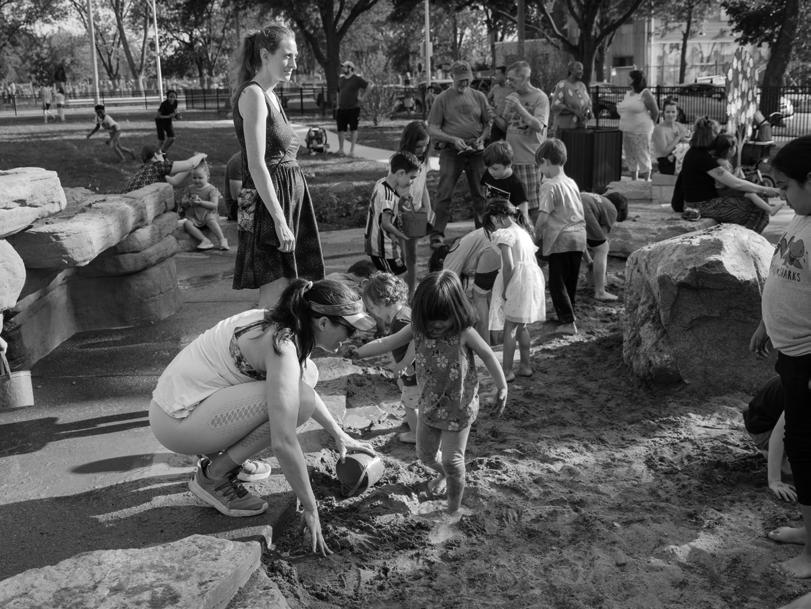
cago, which was also short-staffed. Iovinelli said that, after the Review requested comment from the MWRD for a story about the delay, the park district received its permit the following day. Construction on Reiger Park started in the fall of 2023.
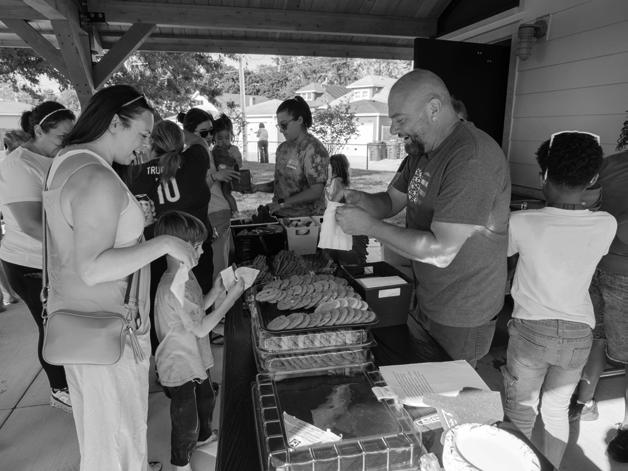
The OSLAD grant was intended to cover half the cost to renovate Reiger Park, an estimated $880,000. But after delays, the price of materials and labor had increased by 30% to $1.2 million. The difference was paid for with the park district’s capital funds.
“And the board was just, ‘No brainer. This is what we talked about doing. We will find a way to figure that out,’” Iovinelli said
trance in honor of Arbor Day.
Because the park district had to adjust its budget, it didn’t have the money to construc t a pavilion or band shell on the south end of the park, like it had planned. Iovinelli said that, when the park district gets more funding, that will be the next phase of Reiger Park’s construction.
ODD BANNOR Commissioner of Public Property, Director of Public Works Sal Stella and Amy Binns-Calvey with a newly planted beech sapling, children play in the sandbox and cookies being ser ved at the Reiger Park opening.
Another OSLAD grant will cover $424,000 of Remembrance Park’s renovations, according to Iovinelli. The park district will pay the other half of the cost.
Until Remembrance Park is renovated, Iovinelli said she hopes that families play on, and enjoy, Reiger Park.
“It gives people an opportunity to bring the neighborhood together. I think that’s what a park does,” Iovinelli said. “I hope that it enriches their neighborhood.”
The park is located at 1526 Circle Ave.
















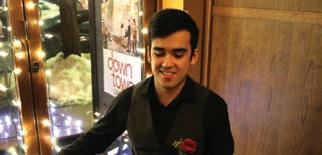












will serve as vice president and Barbahen will serve as secretary
By AMARIS E. RODRIGUEZ Staff ReporterSamuel Valtierrez is the new board president of the Proviso High School Township District 209 school board.
Valtierrez, who joined the board in April 2017, was appointed as the new board president after Amanda Grant announced she would not seek reelection.
“As your newly elected president, I would like to thank the board, those who voted or didn’t vote for me, either way we are a team here,” Valtierrez said.
Before last week’s appointment, board member Arbdella Patterson motioned to move the board reconfiguration to the top of the agenda, above public comment.
The board reconfigured during executive session before going into close session.
According to board member Rodney Alexander, per policy, the board was supposed to be reconfigured in April, not in May, in evennumbered years.
“So, what we should possibly do right now is move that agenda item first and then structure the board before we even go into closed session,” Alexander said. “Amanda, you should not technically be leading this meeting right now, unless you are reelected.”
Alexander nominated Valtierrez, who accepted. Board member Jennifer Barbahen nominated board member David Ocampo, who also accepted Board member Sandra Hixson, Alexander, Patterson, and Valtierrez voted in favor of Valtierrez leading the board. Grant, Ocampo and Barbahen voted against him.
During his first board president report, Valtierrez addressed issues he said were important to him, including public comment.
“To me public comment is very important,” he said. “I am going to ask the board that when we do have public comment and we do have a student or community member
speak, I am going to ask the board to take the name down and assign it to an interim superintendent and make sure they get communication back.”
That was one of his “pet peeves,” he said.
Valtierrez said this would help community members feel heard.
“That is very important for students, parents and the community,” he said. “We want you to know that we are listening. We want to hear from you.”
Valtierrez also addressed what has been the “elephant in the room” for the past three board meetings – the hiring of a new superintendent who would replace James L. Henderson after his resignation last August.
“Just in case you are wondering, yes we are continuing the superintendent search,” Valtierrez said. “So, for all those newspapers or whoever is here who writes, we are continuing the search as you already know.”
Valtierrez expressed his desire to hire someone “seasoned” or “somebody that we all trust, we all agree on.”
“We have to work together as a board to keep moving forward,” Valtierrez said. “I
am only one vote. My job is to represent the board to the best of my ability.”
T he b oard also appointed S andra Hixson, who joined the b oard in the April 2023 election as pa rt of the HBO slate, as vice president.
Barbahen nominated Ocampo, who did not accept the nomination.
Hixson received a unanimous vote. She has not responded to requests for comment.
Barbahen, who joined the board last year, will continue to serve as secretary.
Barbahen secured her position by beating Patterson, who was nominated by Alexander, with a vote 4-3.
Valtierrez, Patterson, and Alexander voted for Patterson and Hixson, Grant, Barbahen, and Ocampo voted for Barbahen to continue in her position.
Barbahen was appointed to the board during the April 2023 election as part of the HBO slate.
The next board meeting will be held on June 11 at Proviso Math and Science Academy at 7:30 p.m. for an open session. The board convenes for executive sessions at 5:30 p.m.






Join us on select Sundays May 26 – October 27: 5/26, 6/30, 7/28, 9/1, 9/29 and 10/27 from 9AM– 2PM Location:

Ah yes, “the elephant in the room.” Sam Valtierrez, the newly chosen president of the District 209 Proviso High Schools board, deigned to respond to that elephant, sort of, in his first comments as the board’s leader
After a year’s effort, why doesn’t D209 have a new superintendent? What is the status of a search process that came down to three finalists and has now seemingly gone haywire?
“Just in case you are wondering,” he said at the last school board meeting, “yes we are continuing the superintendent search. So for all those newspapers or whoever is here who writes, we are continuing the search as you already know.”
Well, thanks for the nod to those pesky newspapers, but no, we didn’t know the search was in “do-over mode.” The district would need to either be forthright about this new mess it has made or be responsive to questions from the press
As to Valtierrez’s aspiration to hire “somebody that we all trust, we all agree on,” that might be a worthy goal for a school board which functions. This one doesn’t. It has two factions. One more trustworthy. One less. Perhaps D209 would do better with another year of co-interim superintendents, limping along, trying to minimize damage, and then leave it to voters to sort out this situation at the polls in April 2025.
“Why do these parks look like this?” Jackie Iovinelli, executive director of Forest Park’s park district, acknowledges thinking when first driving around town a few years ago. She was looking at the four village-owned “pocket parks,” which were inexplicably under the thumb of the village and not the park district.
In one of the best moves in Forest Park’s recent memory, in 2020 the village gover nment leased to the park district those four postage stamps of actively ignored recreational opportunity And one by one, as funding has allowed, those little parks no longer look forlor n. They look as if someone gave them some thought and purpose. Last week, the largest and dullest of the pocket parks, Reiger Park, was reopened to the community Formerly a flat rectangle of bad grass and a playground of ancient vintage, Reiger Park is hard by the cemetery on the far south end of town. If that portion of the village ever needed a reason to feel ignored it could just point to the park.
Now Reiger has sprouted, with a water feature, a walking path, a shelter with restrooms and tables with checkerboards, a sand area, a small soccer field, and a playground built specially to appeal to youngsters with physical and mental challenges
This is a park built by people who love parks. And it shows
Pastor Walter Mitty’s alarm went off on May 1 at 6:30 as usual. He sat up, turned off the alarm, rubbed the sleep out of his eyes and realized he wasn’t immediately reaching for his bathrobe. It was nice to have the cold weather in the rearview mirror — at least for the next few months
He actually enjoyed how the seasons change, but he was now ready for spring to arrive in full force. As a boy he couldn’t wait for school to let out and summer to begin, but by Labor Day he was looking forward to school again.

It’s a paradox, thought Mitty as he tur ned on the coffee maker, life is linear and at the same time circular. Life is change but the more things change, the more they stay the same
Before getting dressed, he checked the calendar on his phone and discovered to his delight that he had nothing scheduled for the day, so instead of putting on his “pastor’s unifor m” he pulled on his jeans and the sweatshirt Susan and his nephews had given him for Christmas, the one with the submarine and the words “Wisconsin Maritime Museum” on the front.
“I’m going to do today in second gear instead of in overdrive,” the pastor of Poplar Park Community Church decided. “I’m going to let the day unfold on its ter ms and be open to surprises.”
He poured himself a cup of coffee, sat down at the kitchen table and through the window watched a robin in the backyard poking for worms. “Consider the birds of the air,” came to his mind. “They neither sow nor reap nor gather into barns, and yet your heavenly Father feeds them.”
“I’m like that robin,” he thought. “God has always provided. Even though I have worked my whole adult life, I have always had a sense of being taken care of.”
But immediately, troubling questions came into his mind. “Why don’t I feel free as a bird so often, and what about those starving, traumatized kids in Gaza? I bet they wish they could be like birds and fly away to green pastures and still waters.”
That’s how Mitty’s mind worked. A few minutes after starting to feel that the glass of his life was half full, he would realize that it was also half empty. And what about those hungry kids in Rafah? Who is taking care of them, and how responsible am I for being a Good Samaritan to them?
Then Mitty’s mind segued to the encampments of university students protesting on behalf of Palestinians
and the counter-protests defending Israel’s attempt to eliminate the threat of Hamas by using its military power. Right after Oct. 7, he was completely on Israel’s side, but as the death toll in Gaza mounted, he shifted to sympathizing with the Palestinians
So far the death toll score was 1,200 Israelis dead and 34,000 Palestinians killed Mitty’s tendency to see both sides of every story caused him to inter nalize the tension in the Holy Land as well as the polarization in this country. He simply could not tolerate simplistic solutions to complicated problems
He recalled his friend Michael saying that, in his synagogue, everyone was proJewish. But being pro-Jewish, he said, did not mean that everyone was pro-Israel.
The tension in Michael’s temple was matched by the uncertainty in Mitty’s head, and maybe more importantly the ambivalence in his soul.
That’s what happens sometimes when you take your mind off its leash and let it wander. Thoughts appear at random which almost contradict each other.
There were always at least two sides to every story — always an “on the one hand” in tension with an “on the other hand.” He got that perspective partly from jour nalists like Jim Lehrer
He also got it from Martin Luther who taught that when two ideas seemed to contradict each other, they might in fact be forming a creative tension. Like a guitar string, the music is not in the tuning peg, nor in the bridge, but in the tension created when the guitar string is pulled tight between the two.
This morning he found himself seeing both sides of the conflict. The guitar string was being pulled tight between the bridge and the tuning peg. “Martin Luther,” Mitty realized, “would call what was happening in his head dialectical thinking, not either/or but somehow both/and.”
It’s not a compromise or finding a happy medium. It’s creating a new “synthesis” that neither side ever thought of. It’s not a win/lose game.
“If you measure the emotional temperature in the protester encampments,” Mitty observed, “and among the counter-protesters, both are acting with feverish, righteous conviction, mirroring the postures of Hamas and Netanyahu. I wonder what Luther would say about that!”
While Mitty moved to the coffee maker to refill his cup, he thought, “I might be driving in second gear, but my mind has already covered a lot of ground.”
Editor Erika Hobbs
Sta Repor ter Jessica Mordacq Amaris E. Rodriguez
Digital Manager Stacy Coleman
Digital Media Coordinator Brooke Duncan
Contributing Reporters Tom Holmes, John Rice, Bob Skolnik, Jackie Glosniak, Robert J. Li a
Columnists Alan Brouilette, Jill Wagner, Tom Holmes, John Rice
Design/Production Manager Andrew Mead
Editorial Design Manager Javier Govea
Designers Susan McKelvey, Vanessa Garza
Sales and Marketing Representatives
Lourdes Nicholls, Ben Stumpe
Business & Development Manager Mary Ellen Nelligan
Circulation Manager Jill Wagner
Publisher Dan Haley
Special Projec ts Manager Susan Walker

Board of Directors
Chair Judy Gre n
Treasurer Nile Wendorf
Deb Abrahamson, Gary Collins, Steve Edwards, Darnell Shields, Sheila Solomon, Eric Weinheimer
HOW TO REACH US
ADDRESS 141 S. Oak Park Ave., Oak Park, IL 60302 PHONE 708-366-0600 ■ FAX 708-467-9066
EMAIL forestpark@wjinc.com
CIRCULATION Jill@oakpark.com
ONLINE ForestParkReview.com
Postmaster: Please send address changes to: Forest Park Review,141 S. Oak Park Ave., Oak Park, IL 60302-2901. Periodical rate postage paid at Oak Park, IL (USPS No 0205-160)
In-county subscriptions: $38 per year. $70 for two years, $93 for three years. Out-of-county subscriptions: $58 per year.
Forest Park Review is published digitally and in print
We held a very festive opening at Rieger Park on May 17. A horde of young children was enjoying the new playground. Lively music played, refreshments were served and park district board members spoke. I was glad the property we once called “16th & Circle” has a shorter more meaningful name
I’m also proud that we live in a community that is so ego-free that many of our parks don’t have names. It is appropriate, however, that we named this park for Frieda Rieger, who donated nine 35-foot lots to the village in 1950.

children there.
It was ideal. They could play at the playground and, when they got old enough, played baseall on the field. We used the park for everything, including some bruising games of tackle ootball. But it did have some minor problems.
Louise and Hildegarde
William owned Concordia Marble Works on the northwest corner of Gale and Madison. He sold monuments and flowers for Concordia Cemetery across the street. In 1914, he retired from making cemetery monuments. (The site is now occupied by the Good Earth Greenhouse).
This undeveloped “prairie” property was adopted by Ed Lambke, who lived across the alley on Marengo. Ed and his buddies cut the grass, constructed a backstop and laid out a baseball diamond. His uncle, Mike Lambke, was a commissioner who further improved the park.
Swings, slide and merry-go-round were added. Tennis and basketball courts were built and a concrete block building was added. Public Works placed a chain link fence around it. This was how “16th & Circle” looked when I brought our young
The building housing the bathrooms was closed most of the time. The drinking fountain didn’t work. Most frustrating of all was the backstop had curled up and no longer did its job of stopping pitches. I complained about the “butter-fingered” backstop to thencommissioner Terry Steinbach. Thanks to her, the backstop was soon replaced. I was encouraged by the efficiency of local gover nment. Point out a problem to an elected official and — voila! — it is fixed. My kids finally outgrew the park, but it continued to serve as a soccer field for FPYSA.
There was talk of naming it Lambke Park in honor of the family that adopted it. But I’m glad we’re giving credit to the woman who made it all possible.
Frieda Kammer was born in Germany in 1867. When she was 23, she married William Rieger. The newlyweds moved to 15 Keystone, River Forest. They had two daughters,
William went on to become a vice president at Forest Park Bank and a River Forest village trustee. He died at the age of 83, just before his 58th wedding anniversary. Two years later, Frieda granted title of the property to Forest Park for $10.
On July 30, 1955, Frieda died and was laid to rest with William. Hildegard Horn and Louise Whalen joined them in the family plot. We could not find a living relative to tell us what prompted Frieda’s generosity But Forest Park finally honored her for her precious gift
Rieger Park no longer has a baseball diamond but it has plenty of other improvements. It has a new playground that has much safer equipment than the old one. It has play-mounds and a gaga ball pit. It has water play and a walking path. It has a new park building, a lush soccer field, and it’s all surrounded by a new wrought-iron fence. We give thanks to the Rieger family and the Lambke family for keeping the dream alive of a community park at 16th & Circle.
It was just before Memorial Day in 1975 when the Garden Club put in the hard work of planting around the flagpole at the Park District, which furnished the flowers for the volunteers to plant. Featured in this photo, taken in the rain, are Charlotte Lanasa, Eleanor Scafidi, Jo Voss, Ida Misiano, Eleanor Dylewski, Jean Kohn, Mary Scolone, Josephine Austin and Jo Cosentino. The photo was featured in the June 4, 1975 Forest Park Review.
** The Memorial Day services will be at The Park at 1 p.m. This is the last time the Legion will be doing the services, as it has closed.
Jill Wagner
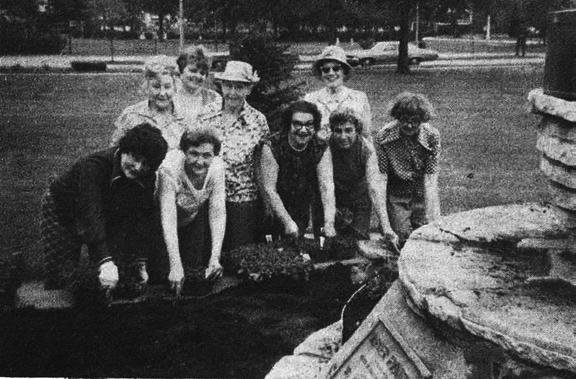
Whether you are struggling with a temporary challenge or if you are living with a chronic condition, your mental health is just as important as your physical health.
50%
More than 50% of Americans will be diagnosed with a mental illness or disorder at some point in their lifetime
Source: Centers for Disease Control and Prevention
America’s youth mental health crisis has been worsened by the COVID�19 pandemic.
Persistent feelings of sadness or hopelessness INCREASED
69% between 2009 and 2021 for U.S. high school students
Source: Centers for Disease Control and Prevention
The Community Mental Health Board of Oak Park Township �CMHB� and the River Forest Township Mental Health Committee invest in a continuum of mental health care that is responsive to our unique and evolving community needs. Together, we provided over $1.6M last year to help local organizations and schools offer prevention, early intervention, treatment, and quality-of-life services to Oak Park and River Forest residents. Our grants resulted in:
� Over 9,500 Oak Park residents accessing services
� Nearly 7,000 units of mental health treatment for Oak Park residents
� Over 300 educational presentations on mental health to Oak Park residents
� Over 1,000 Oak Park high school students trained in suicide prevention
In fiscal year 2024, CMHB provided over $1.4M in funding for mental health, substance use, and intellectual/developmental disability services. To learn more about our work in this area, visit oakparktownship.org/CMHB.





� Over 18,000 hours of services provided to River Forest residents
� Nearly 50 hours of educational presentations on mental health to River Forest residents
� Over 250 River Forest high school students trained in suicide prevention
In fiscal year 2024, RFT provided over $215,000 in funding for mental health, substance use, and intellectual/developmental disability services. To learn more about our work in this area, visit www.riverforesttownship.org/mental-health.







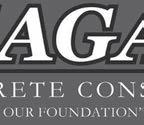




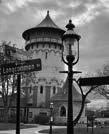


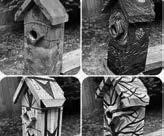














Notice is hereby given that the Village of Oak Park, on behalf of Housing Forward, is applying for the final round of CDBG-CV funds in the amount of $2,000,000 to help support Housing Forward’s rehabilitation of the former Write Inn Hotel, a fixed-site transitional housing shelter purchased by the organization in December, 2023 with funding provided by Cook County.
On March 27th, 2020, Congress passed the Coronavirus Aid, Relief and Economic Security Act (CARES Act) to directly address the impacts of COVID-19. As part of the CARES Act, Congress appropriated $5 billion to the U.S. Department of Housing and Urban Development (HUD) for allocation to cities and states through the Community Development Block Grant (CDBG) program. The State of Illinois has been allocated $70,753,404 of these CARES
Act CDBG funds (CDBG-CV funds). CDBG-CV funds must be utilized to prevent, prepare for, and respond to COVID-19.
The grant application is available for public review and comment during business hours MondayFriday, effective May 23 to May 31, 2024 at the Oak Park Village Hall, Neighborhood Services Department, 123 Madison; on the Village Grants webpage; and at the Public Library, Main Branch, 834 Lake Street.
Reasonable accommodations will be made for persons with disabilities and non-English speaking persons, as needed.
Any comments concerning this grant application can be submitted in writing to Vanessa Matheny, Grants Manager, at grants@oak-park.us, as well as at the CDBG-CV Application Public Hearing to be held at Village Hall room 101 from 3:305:00 p.m. on May 31, 2024.
Published in Wednesday Journal, May 22, 2024
PUBLIC NOTICE
The River Forest Park District has placed its 2024-2025 Combined Budget and Appropriation Ordinance on file for public inspection. Said Ordinance may be examined on the River Forest Park District website. A public hearing on said Ordinance will be held at 6:00pm on Monday, June 24, 2024, at the Depot, 401 Thatcher Avenue, River Forest, Illinois.
Michael J. Sletten, Secretary River Forest Park District
Published in Wednesday Journal May 22, 2024
PUBLIC HEARING VILLAGE OF NORTH RIVERSIDE
NOTICE OF AVAILABILITY OF THE PROPOSED APPROPRIATION FOR PUBLIC INSPECTION AND OF HOLDING A PUBLIC HEARING THEREIN
Notice is hereby given that copies of the Proposed Appropriation for the Village of North Riverside for the Fiscal Year commencing May 1, 2024, to April 30, 2025, are available for public inspection during normal business hours at the Village Commons, 2401 South Des Plaines Avenue, North Riverside, Illinois or on the Village’s website at: www.northriverside-il.org.
Notice is hereby given that a Public Appropriation Hearing shall be held by the Mayor and the Board of Trustees for the Village of North Riverside:
Date:
Monday, June 3, 2024
Time: 6:00 PM Place: Village Commons 2401 South Des Plaines Avenue North Riverside, Illinois
All interested persons may attend the meeting and shall have the right to present oral and written comments and suggestions regarding the proposed appropriation. After the public hearing and before final action is taken on the proposed annual appropriation ordinance, the Mayor and Board of Trustees may revise, alter, increase, or decrease any line item contained in the proposed annual appropriation ordinance.
Final action on the proposed annual appropriation ordinance will occur on June 17, 2024.
KATHY RANIERI VILLAGE CLERK NORTH RIVERSIDE, ILLINOIS
Published in RBLandmark May 22, 2024
BBest of the Best Gala.
“I had no clue about this,” Hill said of the award. He wasn’t aware he was nominated until he received a call from Iovinelli tell- ing him he won the Good Sportsmanship Award.
“After I got over the surprise, it was a good feeling to be recognized,” Hill said. And he doesn’t plan on stopping his efforts with the Forest Park Youth Soccer Associa- tion any time soon. His goals for this year include getting more kids involved with the“I’morganization. hoping that we see more partici- pants,”

career — he works as a mechanical design engineer for his day job — Hill joined the Forest Park Youth Association board, then became its president around five years ago. “I grew up with youth sports: basketball, baseball, football,” Hill said. “I wanted to be a part of it and give back what I got out ofItparticipating.” was this dedication that spurred Jackie Iovinelli, the Park District of Forest Park’s executive director, to submit Hill’s name for Illinois Association of Park Districts’
A er years on the market, local grocery’s rezoning is getting neighborhood pushback








efore rumors of Forest Park institution Ed’s Way closing its doors ran amok, Forest Park Review’s Jessica Mordacq reported behind the scenes. Her story captured the reasons driving the closure and community members’ concerns about loss of an easily accessible grocery store. Authentic. Factbased. Close to the ground. The kind of local reporting you can only get with Forest Park Review. Help keep this reporting going.
By JESSICA MORDACQ Staff ReporterIn 2018, the owners of Ed’s Way Food Mart, father-and-son Ed and Mike Nutley, an- nounced they were selling the building and retiring. Ed, who’s in his 80s, and his son, Mike, have run the neighborhood grocery store at 946 Beloit Avenue for more than 30 years. But the beloved store may be going away. The Nutleys
Ed’s Way on the market with
commercial
estate firm David
& Associates. Michael
dervudor, a principal in 946 Beloit LLC, pur- chased the Ed’s Way property to turn it into a 10-unit townhome. The property’s change in ownership also comes with a change from commercial to residential zoning. Ed’s Way is one of three buildings with

Ed’s Way rezoned to become a 10-unit townhome
commercial district zoning in around 40 square blocks of a residential district. It’s currently a B-1 property, zoned for neighbor- hood shopping in a commercial district. In January, Leydervudor petitioned to Forest Park’s planning and zoning com- mission for a map amendment that would change the property to R-3, a high-density residential district.
The commission approved the plan last month and, in a council meeting Feb. 12, the council also approved the site plan to start construction on the 10-unit townhome. Jessica Voogd, commissioner of public property, was the only abstaining vote. The change in zoning would set back the property’s front yard and affect how much of the lot is covered.
A B-1 property requires that the front yard is set back 20 feet, while an R-3 requires 18.6 feet. Currently, Beloit Avenue is considered the property’s front yard, as many develop- ments on the block were built before modern zoning regulations. Leydervudor proposed that the townhomes are set back 10 feet from the street. A B-1 property also requires a maximum of 80% lot coverage, while an R-3 one requires a maximum of 40%. Ed’s Way
covers 58% of the lot, and Leydervudor pro- posed for the townhomes to cover 47%. But Forest Park residents aren’t so much concerned with the details of this rezoning as they are with losing an easily accessible grocery store.
“It is deeply disappointing that the Village did not push harder on the realtor to find a buyer interested in building a mixed-use property,” said Lindsay Baish-Flynn, a For- est Park resident who lives on Thomas Av- enue, in an email to the Forest Park Review. “Ed’s Way served several critical functions in this community, including being a food re- source to the aged, disabled, and school-aged children.” Ed’s Way sits across the street from Field- Stevenson Intermediate Elementary School and Forest Park Middle School. “The zoning commission, seemingly with little pushback or oversight, rubber stamped this for townhouses,” said James D’Amico, a Thomas Avenue resident who spoke at the Village Council meeting on Feb. 12. “There needs to be a little bit of dialogue and com-

























Forest Park Bank makes it possible.

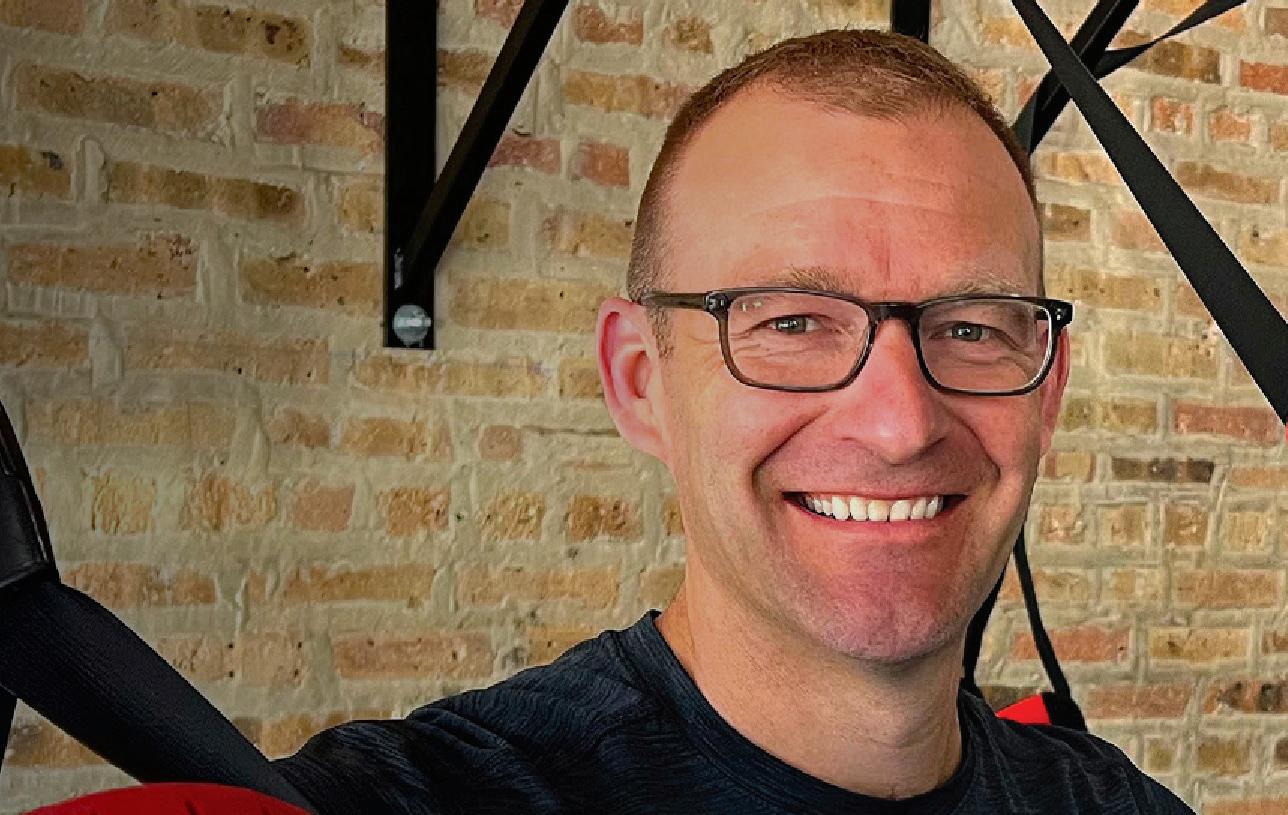

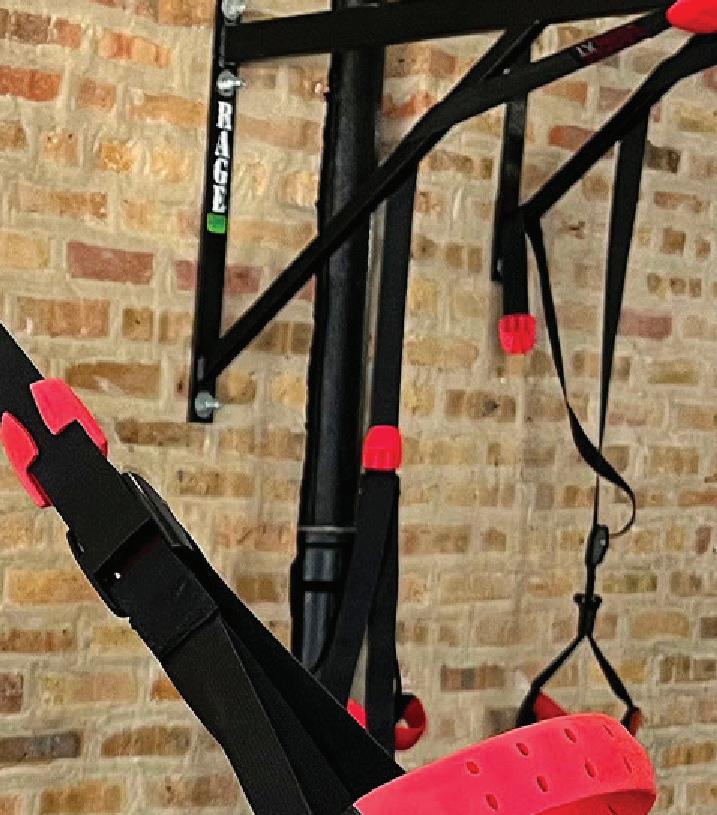

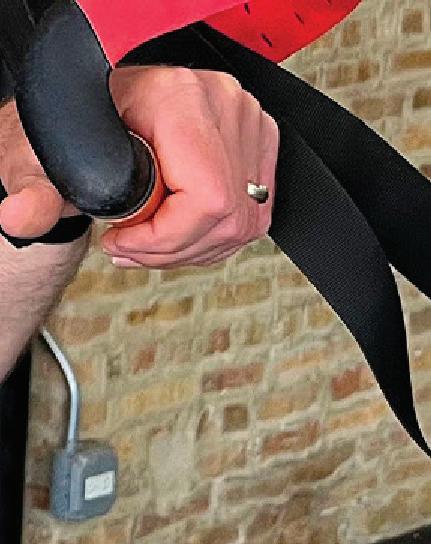
Need a plastic fork,too?
you have to ask for oneABy HOPE BAKER Contributing reporter
ban on polystyrene, commonly known by the brand name Styrofoam, went into effect in Oak Park on Jan. 1. The ban established that businesses cannot sell or distribute disposable food containers that partially incorporate or are entirely composed of polystyrene foam packaging.
According to Dan Yopchick, the village’s chief communications officer, implementing the ban has gone smoothly so far.
“From our perspective, the rece ption from business owners has been positive,” he said. “I haven’t heard anything ne gative or any pushback against it.”
The ban does not apply to food establishments with an annual gross income less than $500,000 per location until Jan. 1, 2025.
Yopchick said that when eliminating the use of polystyrene was being discussed by the Village Board, concerns were mainly related to smaller establishments with low-
been working closely with food establishments to educate them about the new policy. They have also provided downloadable signage and talked with businesses about the seven exceptions in which single-use plastic food ware is allowed.
According to Engage Oak Park, drinking straws are still permitted as well as single-use plastic food ware that is necessary to address safety concerns, comes in a vending machine or is pre-packaged by a manufacturer
Not-for-profit corporations and federal, state or local government agencies that provide food to needy individuals are exempt from the new policy.
“Staf f, led by our Environmental Health division within the Health Department, is responsive to questions and I personally have not heard of any issues with enforcement,” Yopchick said.
Rob Guenthner, owner of Kettlestrings Restaurant Group and President of the Oak Park Chamber of Commerce, said his businesses are not impacted by the ban on polystyrene.

request from customers.
According to Yopchick, village staf f has
had any impact on us use Styrofoam before,”
“At all of our places in e used compostable takeout for a long time.”
Guenthner added that although his busiimpacted by the single-use food ware ordinance, implementing the new rules has ended up being easy. e still get a fair amount of people askerware, but it’s certainly ,” he said.
Kettlestrings Restaurant Group includes rn at 800 S. Oak Park e., Kettlestrings Grove at 105 S. Marion St. and Betty’s Pizza and Pasta at 1103 which are in Oak Park, as well Starship Restaurant & Catering at Forest Park
“The concern I hear from other people about the Styrofoam ban is that places that use Styrofoam tend to be lower-cost establishments that do a lot of carry-out and at r price point, so moving from Styrofoam to something else is probably going to for those folks,” Guen-
He said he has also heard that some business owners feel like certain products, ver better in Styrofoam because soup stays warm and is easy to rning one’s hand when s packaged in Styrofoam.
“But I think the benefits will still ultimately outweigh the inconvenience and the slight increased cost,” Guenthner said.


is climate anxiet

As we move through spring toward the arrival of summer, the colors of the landscape will come to life as many plants begin to flower. All this would not be possible without the dutiful work of our pollinators. Without this generally unnoticed effort, agricultural economies, food supply, and the surrounding landscapes would collapse. Did you know somewhere between 75% and 95% of all flowering plants on earth need help with pollination?
To give a sense of scale, that’s over 180,000 plant species, 1,200 crops, and it adds over $200 billion a year to the global economy. Honeybees alone contribute $1 billion to $5 billion in agricultural productivity in the United States. Safe to say, these birds, bats, bees, butterflies, beetles and other small mammals are vitally important to the world. So, what else do they do? In addition to our food, they support healthy ecosystems that clean the air, stabilize soils to prevent erosion, sequester carbon, and support other wildlife.
How can you help? Providing a habitat that supports them is the key. Research has shown that local pollinators prefer local, native plantings. Making this small change makes a difference—so I encourage you, if you’ve not already done so, to make 2024 the year to grow your role in this collective effort.




2021 survey of young people ages 16 to 25 in 10 countries published in the British medical journal The Lancet found that 59% of those who responded said they were “very or extremely” worried about climate change while 84% said they were at least “moderately” worried.
More than half said they experienced strong, ne gative emotions about it, whether sad, anxious, angry, powerless, helpless or guilty. Another threefourths of respondents said they were frightened about the future.
So, how do you address concerns about the climate without triggering paralyzing anxiety?
Climate cafes may provide a solution.
Jess Pe pper, the person credited with holding that first climate cafe, told the Guardian newspaper in 2021 that she hosted her first cafe in in Dunkeld and Birnam, Scotland, because, “It just dawned on me that people needed to be speaking with each other, and not just in a one-of f kind of session.”
The result was both political and therapeutic. Climate cafes provide a for um where information is shared, but in a way that is not overwhelming. Too often these days what you want is a glass of water, and instead you get a blast from a firehose.
“It just dawned on me that people needed to be speaking with each other, and not just in a one-o kind of session.”
Begun in Scotland in 2015, climate cafes provide informal get togethers in which attendees intentionally discuss topics many find too inconvenient or troubling to discuss in larger, more for mal venues. Some climate cafes meet re gularly. Some meet online. Others just pop up for a couple of sessions and then disappear again.
JESS PEPPER
One participant in a climate cafe told a re porter at the Guardian that she had “shed a lot of tears, and gotten in touch with some powerful feelings” that came from sharing her anxieties with like-minded people.
All politics is local, and you can’t get much more local than a group of people getting together to discuss the issues. Participants in climate cafes have re ported they feel relief from anxiety and numb helplessness.
One of Chicago’s first climate cafes, held last December at the Pe gg y Notebaert Nature Museum in Lincoln Park, was organized by a Chicago-based psychotherapist
and clinical social worker, Libby Bachhuber. Her climate cafe also was part of an ongoing program of climate cafes associated with the Climate Psychology Alliance North America.
The Climate Psychology Alliance’s online answer to the question “What is a Climate Café?” sounds as much like a group therapy session with snacks than a political action committee: “a gathering of people meeting with facilitators to share their responses to the climate crisis,” “a confidential, warm, friendly, hospitable occasion –involving cake, hot drinks, maybe a glass of wine or beer,” “the focus… thoughts and feelings about climate change, rather than what we ’re doing about climate change.”
Bachhuber’s climate cafe at the Pe gg y Notebaert Nature Museum definitely had a group therapy feel. As she told a Tribune re porter in a December 28, 2023 article: “Unless we can process our internal responses to climate change, we are not going to be able to respond appropriately to it.”
The Chicago-based Climate Psychology Alliance, North America, hosts a virtual climate care the fourth Tuesday of each month, 6 to 7:30 pm Central (https://www. climat ep syc holo gy.us/climate-cafes/climate-cafe).
Those interested in the inter national climate cafe movement can also visit the Climate Cafe Network Hub (https://www.climate.cafe/).
As wildfires, severe storms, droughts, and flooding impact daily lives of Americans in all 50 states as a result of climate change, some media outlets have upheld the Great Lake region as a potential climate refuge.
Yet the region is not exempt from the changing climate currently impacting and uprooting lives all over the world.
Consider the facts.
In the last decade, Lake Michigan rose more than six feet in less than eight years and then fell three feet in three years. In February, Chicago-area residents flocked outside as temperatures reached 74 degrees, making it the warmest February on record. Last summer, temperatures in Chicago reached 100 degrees, a rarity in the city. In early July, Chicago-area residents witnessed a cluster of severe storms cause flash flooding and power outages, including on the West Side. It also forced the cancellation of the NASCAR Chicago Street Race.
Yet at the same time, Illinois was experiencing a drought (April 1 through June 30 brought the 11th-driest period on record in Illinois), a disaster that cost billions of dollars. This drought, which re-intensified at the end of the summer, impacted Illinois farms and dropped river levels
“In the coming decades, Chicago will experience warmer and wetter winters and hotter and drier summers due to climate change. These temperature and humidity shifts will also lead to changes in weather and increased frequency of severe, dangerous, and financially damaging storms,” said Jelena Collins, founder of the Climate Youth Coalition and 2022 OPRF graduate studying climate science and physics at McGill University.
Extreme temperatures and floods disproportionately impact poorer and minority communities, as experts say climate change exacerbates problems for under-invested communities, like those on the West Side, including Austin.
“Nearly every climate model has projected an intense increase in precipitation in the Midwest, leading to greater risks of flood-
ing, stress on infrastructure, and, conversely, more intense dry seasons,” Collins said.
“These dry seasons are damaging to agriculture, increase respiratory hazards, and again place undue strain on infrastructure.”
This begs the question: In coming years, how can Illinoisans expect to be further impacted by climate change?
And what should we do to pre pare?
Illinois Extension, University of Illinois network of educators and experts working to sustainably protect the health and wellbeing of Illinois residents, reported that the primary impacts of climate change in the region will be an amplified risk of high temperatures and heavy precipitation.
These changes can also create public health hazards and expand mosquito and tick populations, as well as corresponding diseases. To prevent these bites, the CDC recommends using insect-repellent, wearing loose and long clothes, treating clothes with 0.5% permethrin, and checking for ticks after being outdoors.
Higher temperatures and heavier rainfall can impact air quality, affecting people with healthy lungs and exacerbating issues for people with seasonal allergies or asthma. Climate change also impacts residents’ mental health. The Mental Health and Climate Change Alliance has collected resources for individuals experiencing climate distress.
Above all, Collins stressed the importance of flood preparation. “I think residents of Chicago would be wise to prepare for flooding in the immediate years to come,” she said. “This could mean updating their basements or housing foundations, but also having emergency equipment on hand in case of severe rainstor ms.”
To prepare houses for floods, the Natural Resources Defense Council recommends buying flood insurance, elevating your boiler, and reconsidering your landscaping to help water seep into the ground.
In emergency flood situations, Illinois Extension recommends that households prepare for extreme weather by gathering supplies including a first aid kit, water, canned food, and medications Additional resources for emergency situations can be found on its Extreme Weather Preparedness site





























from the




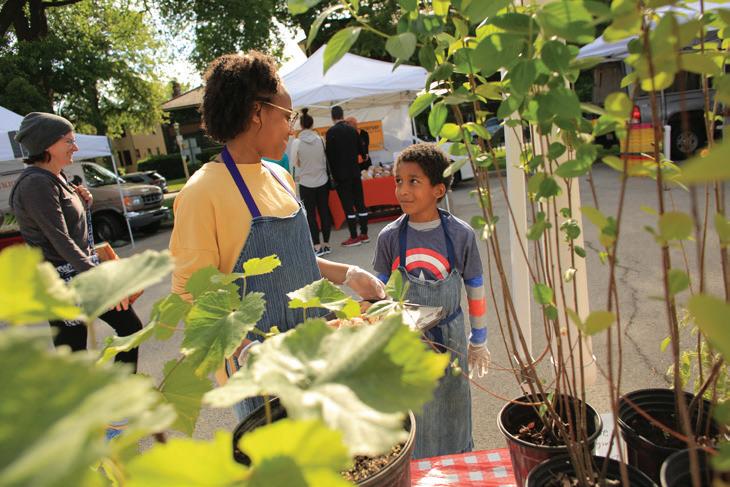


7 a.m. to 1 p.m. every Saturday ● May 18 - October 26 ●








www.oak-park.us/


Stewards of the land and Olmsted’s Plan


Walking Tours of Riverside return May 26 and continue on the last Sunday of the month through October. 2-4 PM. Riverside train station. $25 per person (discounts for seniors and Olmsted Society members). Visitors will enjoy stories about homes, people, landscape and history. See website for details.
Walking Tour: North Sunday, May 26, 2024 2:00 pm
Workday: Big Ball Park Saturday, June 1, 2024 9:00 am
THANKS TO
Workday: Big Ball Park Saturday, June 29, 2024 9:00 am
Walking Tour: South Sunday, June 30, 2024 2:00 pm








rom its humble beginning in 2010 as an informal community meeting organized by green pioneers Sally Stovall and her partner Dick Alton, One Earth Collective has grown to encompass a plethora ofdiverse programs dedicated to increasing awareness ofthe impact of climate change and inspiring action regarding the environment and social justice
T he initial group, wh ich quickly ga i ned traction in progr essive Oak Pa rk , focused on developing local green block pa rt i es offering info rm ation on p lanting milkweed , essential for the survival of monarch butterflie s, as ell as omposting and hemicalfree lawn care
In 2017, the organization launched a summer pilot pr on Chicago’s west side. The pr eventually became ration with youth development pr side nonprofits, offers cooking instruction, a speaker series and field trips. Young people involved in the pr an urban
The broad-based One Earth Collecti “mothership” now comprises One Earth Local, for One Earth Youth developing young sustainability leaders; and the highly popular One Earth Film Festival, widely





Organic Lawn Care Since 2007
Compost tea soil feedings
Natural techniques for pest control

Biochar & microbiological soil amendments
Yard Drainage Solutions
Sustainable Landscaping
Native Pollinator Gardens

Vegetable Gardens
We



















Illinois is gearing up for Invasive Species
Awareness Month this May, a critical period spotlighting the ongoing battle against ecological intruder s.
Patti Staley, Director of Horticulture and Conservatory Operations at the Park District of Oak Park, delves deep into the topic of invasive species in garden environments and offers insights on effective management strat egies.
Staley said that this month provides an opportunity for increased education and action on the dangers of invasive species in the garden.
According to Staley, invasive species are plants or animals from different environments or parts of the world that do not belong where they are locally found. These invasive species are typically not native to the ecosystem they inhabit and can cause harm to the ecosystem.
“It’s important to distinguish between invasive and non-native or exotic species. Many people use the term ‘invasive’ loosely, it’s a strong word that shouldn’t be used lightly,” Staley said. “Terminology is crucial for understanding. It’s not just invasive; some plants can be aggressive without causing harm to our ecosystem,”
In Illinois, some common invasive species include garlic mustard, honeysuckle, buckthor n, burning bush, and certain shrubs and trees.
Studies indicate that garlic mustard exhibits allelopathic traits, whereby it emits substances that hinder the growth of competing plant species.
In terms of animals, emerald ash borer, a green buprestid or jewel beetle native to north-eastern Asia and Asian carp are also significant concerns. Asian carp refers to a group of invasive fish species native to Asia, including the silver, bighead, black, and grass carp, which have rapidly proliferated in waterways across North America, posing significant ecological and economic threats.
“Invasive species, as shocking as they may be, are introduced into environments, ecosystems and even your own backyard by humans, whether done purposefully or inadvertently,” Staley said.
Staley, who used to work in the landscape industry, said they sometimes planted invasive plants without the knowledge that they were har mful




“Science is always evolving and changing and our ecosystems are adapting, and what we know now, we didn’t know back then, and what we knew then, we won’t know now,” Staley said. “Paying attention to science and keeping updated on species, and we talk about climate change and how that will impact invasives, it’s not black and white.”
Weather, including climate change, plays a huge role in the spread of invasive species.
“I’ve observed how climate change impacts plants, whether invasive or not, and we saw those effects this spring with the early war m-up,” Staley said.
According to Staley, invasive species can choke out native species, pushing them to the brink of extinction.
“Education is crucial; understanding what plants you have in your garden and replacing invasive species with native or nonaggressive plants is essential,” Staley said.
Staley suggested that once the invasive species has been identified and removed, one should ideally opt to grow a native plant or a plant without ag gressive tendencies.
Staley added that there are some great nonnative perennials that can be planted that can extend the growing season that
be mixed in with native plants. A perennial plant is a plant that lives more than two years.
When asked about the significance of public awareness and education in addressing the spread of invasive species, as well as the role of gardens and conservatories in this ef fort, Staley emphasized the crucial importance of public awareness and education.
“Organizations like garden locations and conservatories can play a significant role in educating the community about invasive species and what individuals can do to help prevent their spread,” Staley said.
Staley acknowledges the wealth of resources available for combating invasives, citing the remarkable ef for ts of organizations like the Kane County Forest Preserve Staley highlights their impactful cleanup initiatives along the Fox River and the multitude of volunteer groups involved.
As for this warm winter: Could warmer temperatures and climate change lead to an increase in invasive species in the garden?
Perhaps.
“With a prolonged growing season, there are increased chances for plants to propag ate over an extended timeframe,” Staley said.
Spotted Lantern y

Insects: Spotted
from page B7
vironmental film festival.
One Earth Film Festival, which was launched in 2012 by local sustainability leader Ana Garcia Doyle, has garnered international reco gnition. The first festival, which primarily featured films by local filmmakers, attracted 500 attendees; last year the festival reached 4,500 virtual and in-person viewers. This year’s festival, which ended April 23, was held in venues throughout the Chicago area, including the Chicago Cultural Center and Pe gg y Notebaert Nature Museum as well as the Oak Park Public Library and Unity Temple, and showcased submissions from filmmakers around the world.
In 2013, the organization debuted the One Earth Young Filmmakers Contest, launched by for mer River Forest resident Sue Crothers Gee. T he progr am has grown significantly in the past do zen years; last year it received more than 400 entries from young filmmakers throughout the country and as far away as Australia, Taiwan, Brazil and Mexico.
T he contest is open to youth as young as third graders to post-graduate colle ge students. With the support of the Manaaki Foundation, winning filmmakers receive cash awards between $100 (third graders) to $1,000 (colle ge students). In an ingenious “pay-it-forward” initiative, winners also receive matching grants that they, in turn, award to nonprofits dedicated to projects that align with the themes of
their films. In addition, several nonprofits, including the Sierra Club, Jane Goodall Institute, and Wild Ones West Cook, offer $500 Environmental Action Awards.
“The Young Filmmakers Contest encourages young people to create films that propose solutions and inspire action to combat the impact of global climate chang e,” said Lisa Biehle Files, who joined the YFC team in 2016. “And the matching grant progr am gives them the agency to make an impact that ripples throughout the sustainability movement.”
Winning YFC films are shown throughout the annual One Earth Film Festival. Beyond the contest, young people are supported by connecting them with professional filmmakers and providing them with opportunities to strengthen their skills
Files was pleased to see that, in general, this year’s films were more hopeful than last year’s submissions, which included film titles like Code Red, The Apocalypse, and Our Generation, a film exploring the environmental challenges faced by the younger generation due to the actions of previous generations. She attributes some of this to the waning of COVID, which was so isolating and depressing for many young people.
“Some of the films submitted in 2022 were kind of dark and filled with dread. But, in the past year, they seemed to be more optimistic about the future,” Files said.
The deadline for submitting films for the 2024 One Earth Young Filmmakers Contest is June 25. Winning films will premier on September 22 at the Gene Siskel Film Center and will be shown during the 2025 One Earth Film Festival. For more information, contact https://www.oneearthfilmfest.org/ contest-details.


The Village of Brookfield recently adopted its first five-year Sustainability Plan, which sets ambitious goals and creates opportunities for residents, businesses, local partners, and village o cials to act on sustainability e orts in Brookfield.
Visit our new Brookfield Sustainability Resources webpage to check out the plan, read about current initiatives, find local resources, and learn about opportunities to get involved. Scan and visit the website!










The release last year of the Chicago Cumulative Impact Assessment found that Austin, East Garfield Park, West Garfield Park and North Lawndale communities are among the areas disproportionately impacted by higher heat-related illnesses, industry pollution, increased amounts of ground level ozone and particulate matter, flooding, lack of green space, higher density of buildings and pavement — and historic disinvestment. All of these environmental conditions intersect to play a role in the life-expectancy gap between Black and white Chicagoans. Studies show on average, Black Chicagoans live 8.8 years less than whites do.
Austin Weekly News spoke with Grace V. Johnson Adams, a spokesperson with the Chicago Department of Public Health to see which actions are being considered and put in place to deal with the environmental injustice
According to the federal Environmental Protection Agency, environmental justice is achieved when all residents have the same de gree of protections from environmental and health hazards.
AWN: Since the release of the assessment, which actionable measures have been put in place so far to address the study’s findings?
CDPH: Several actions have been taken already since the release of the Cumulative Impact Assessment in September 2023 to address the findings. For example, one Environmental Justice Action Plan tactic called for at least 5,000 trees to be planted per year in targeted communities using tree canopy data, and 78% of trees planted in 2023 in the arterial tree planting program were in priority areas. Additional measures began before or during the As-
sessment process and have continued since then, such as the development and implementation of a data collection strateg y to inform and re port on the effectiveness of community engagement activities. There are other measures that have not yet begun, but will be completed per the Environmental Justice Action Plan.
CDPH and community partners, including Little Village Environmental Justice Organization, Center for Neighborhood Technology, and the UIC School of Public Health’s Environmental and Occupational Health Science, are co-leading a community air monitoring network strategy, with a focus on environmental justice neighborhoods. A planning award for co-developing this strategy is provided by The Partnership for Healthy Cities and funding from the Chicago Recovery Plan will be used to implement a co-developed and sustainable community air monitoring network and create a unified public-facing platform for air quality data. Once operational, the air monitoring network will address the identified data gap of local air quality in Chicago from the CIA.
AWN: What is the Environmental Justice Action Plan?
CDPH: The Interdepartmental Environmental Justice Working Group was for med in March 2023 by the Department of Environment and the Department of Public Health to ensure that all city departments are working together to promote environmental justice by identifying and addressing inequities. Out of this group came the Environmental Justice Action Plan, which includes dozens of specific, actionable policy changes that can be implemented in partnership with more than 10 city departments The city committed to publishing an annual report based on progress made toward the Environmental Justice Action Plan, beginning in December 2023. The first version of the report was released December 22.
e resulting Chicago EJ Index map shows that the areas of greatest concern for pollution burdens and vulnerability to its e ects are located on the South and West Sides of the city. ese EJ Neighborhoods are o en bisected by major highways and have high concentrations of industry, including community areas such as Austin, East Gar eld Park, Englewood, Humboldt Park, Lower West Side, McKinley Park, New City, North Lawndale, Roseland, South Deering, South Lawndale, West Englewood and West Gar eld Park.
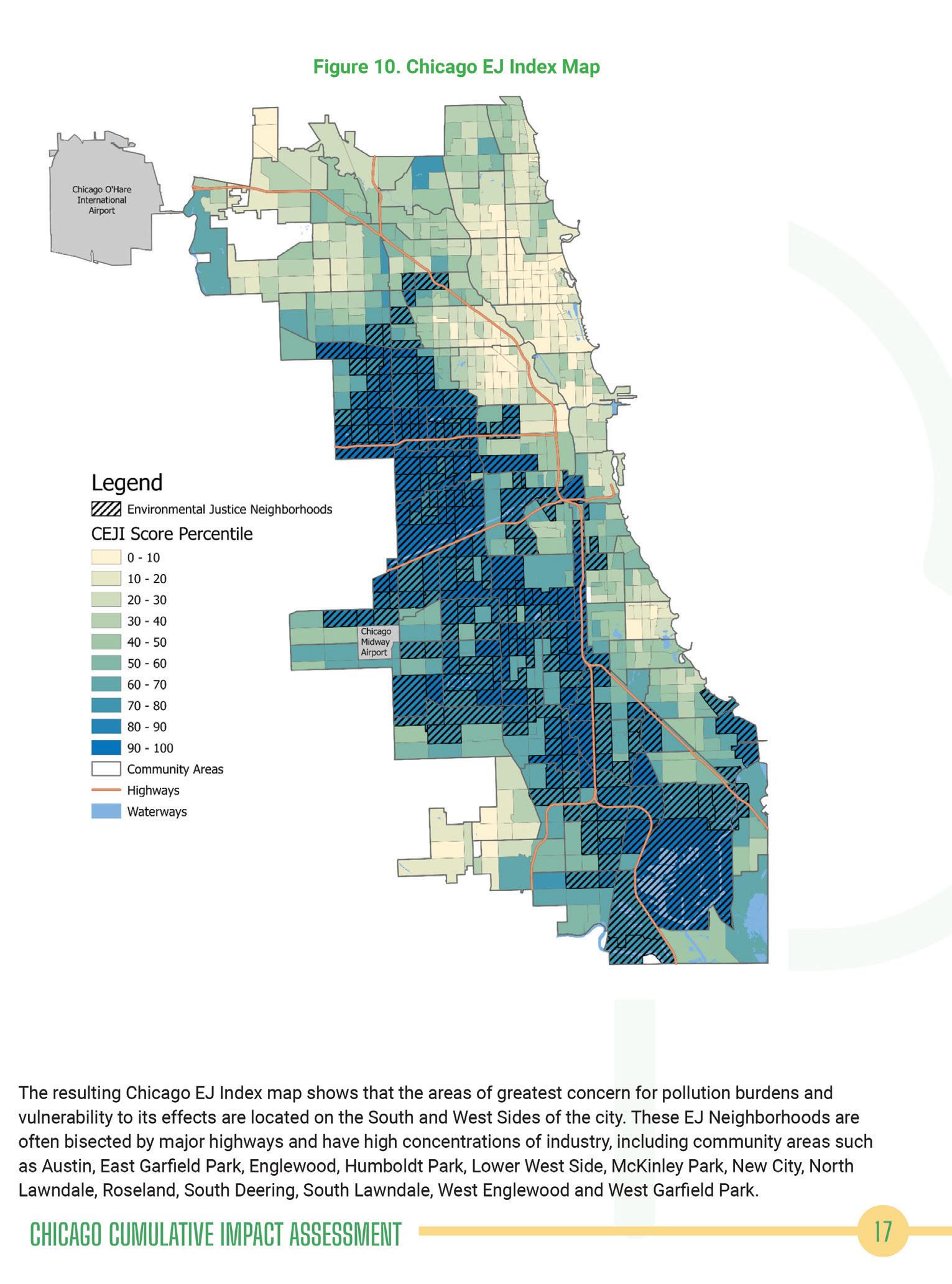
es, strategies, policies being considered to address heat zones, and the other environmental issues residents on Chicago’s West Side are facing?
CDPH: The cumulative impact ordinance is cur rently being drafted and is expected to be introduced to City Council this year. Additionally, work through the Defusing Disasters Working Group, which encompasses researchers, public health officials, policy advisors, emergency management teams and community partners, will leverage data and local knowledge to identify those most vulnerable to extreme heat in Chicago’s communities. Last summer, researchers and local community members be g an collecting the data needed to characterize heat vulnerabilities through Chicago’s Heat Watch 2023 initiative as part of the National Oceanic
Watch Campaign, which aims to help cities across the U.S. identify specific neighborhoods where heat-mitigating interventions could save lives. Now, the Defusing Disasters Working Group is creating heat vulnerability tools that function at both the community and clinical levels. The community-level tool will be used operationally by the City of Chicago’s Office of Emergency Management and Communication and CDPH in both emergency prevention/response and long-term mitigation contexts. The clinical tool will be used at the doctor-patient level to identify and protect at-risk individuals. Actions remain in progress, and as additional information becomes available, CDPH and DOE will continue to share these updates with Chicago residents, especially those in community areas.”






















